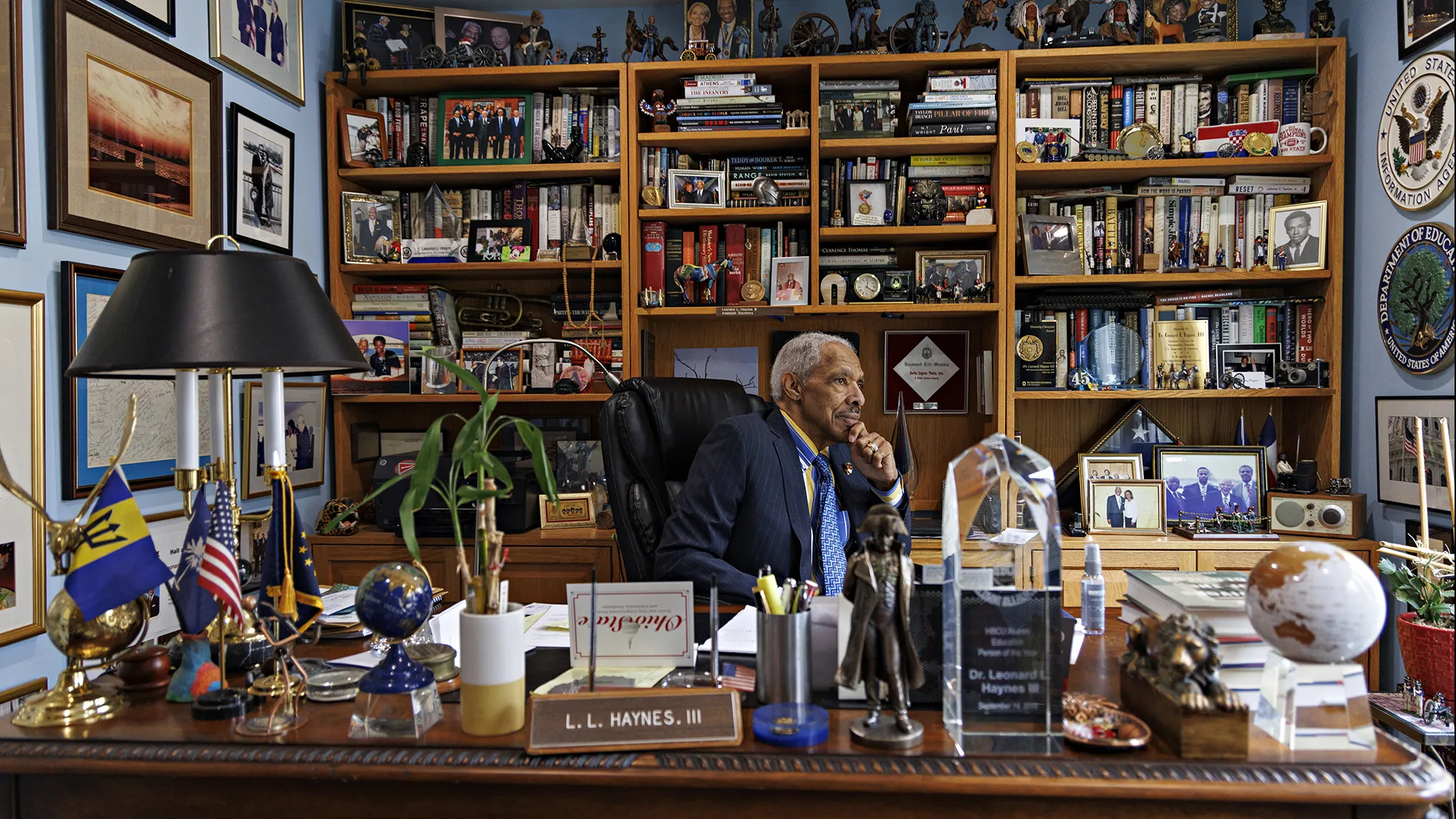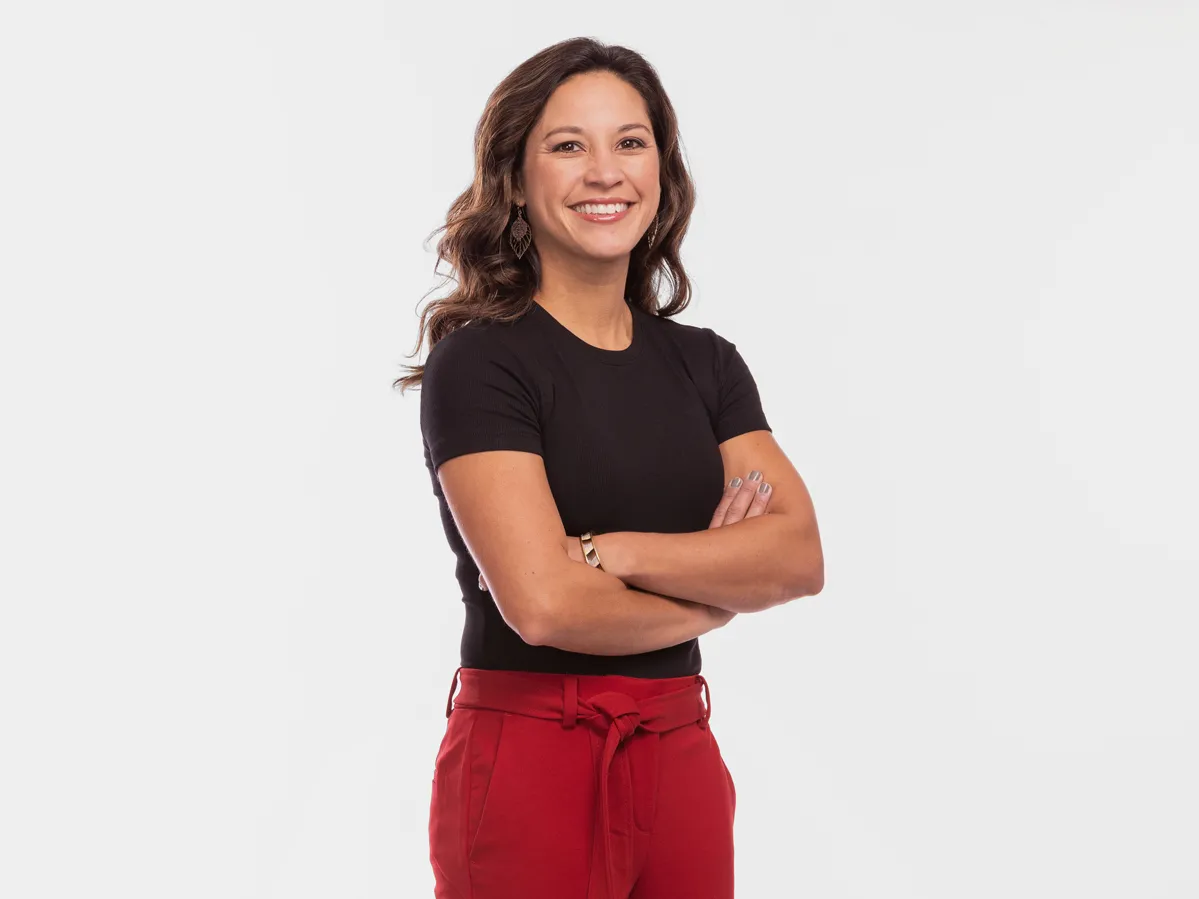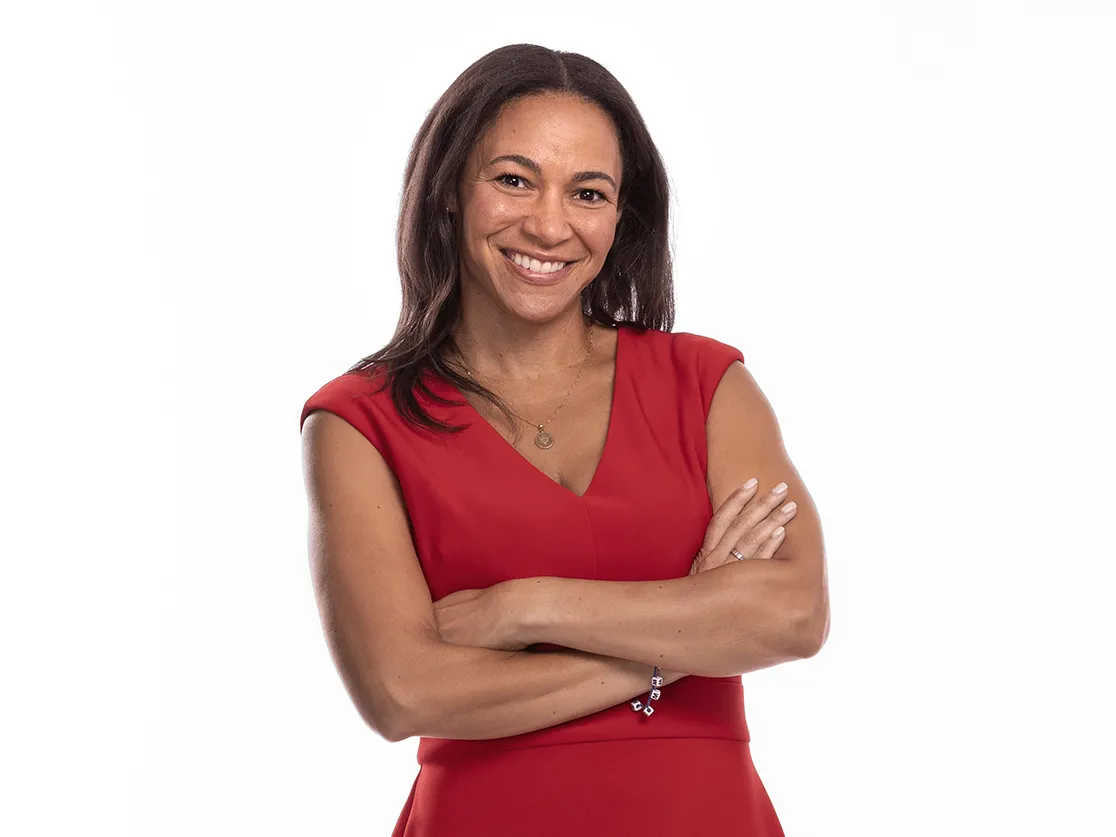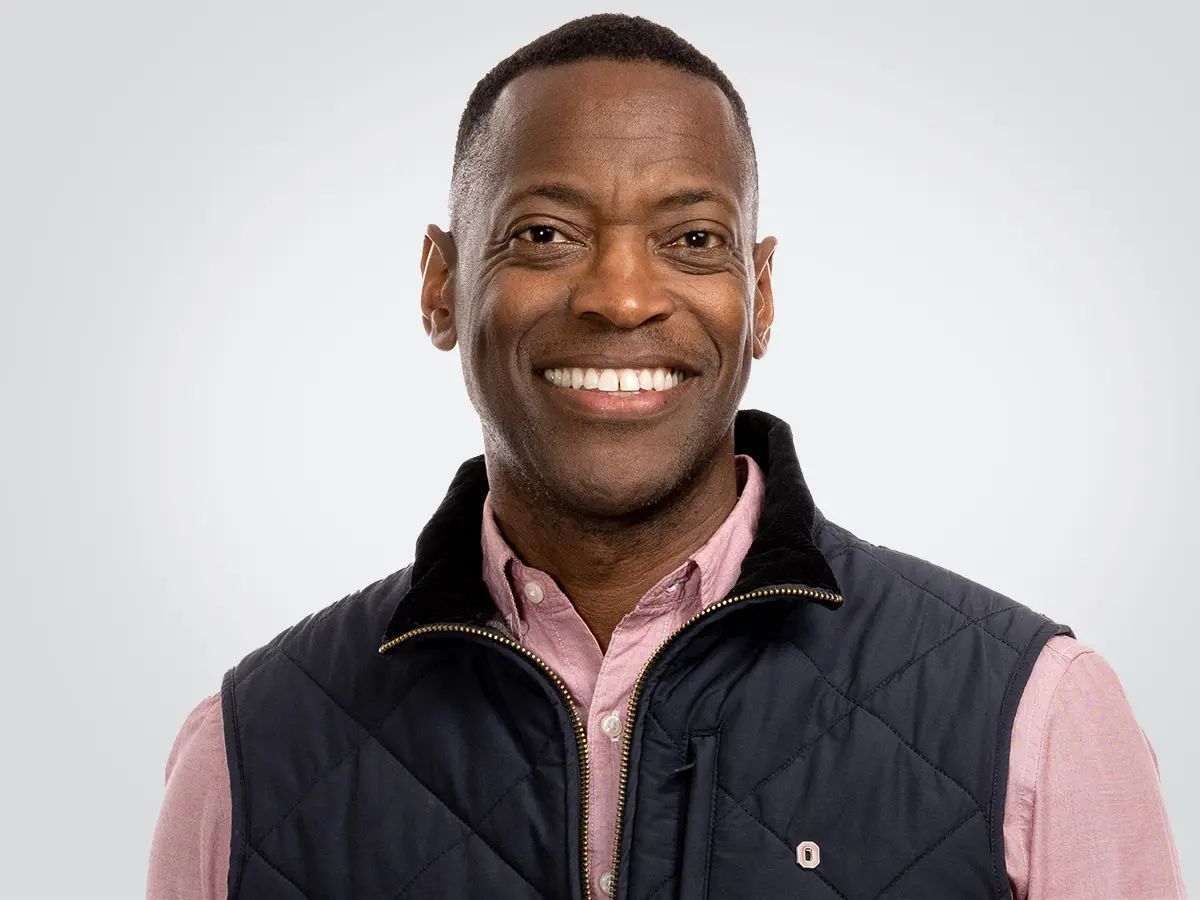He’d say students starred in his storied career
Alumni board member Leonard Haynes III ’75 PhD, ’90 HON has dedicated his life to improving outcomes at colleges.

Leonard Haynes in his home office (Photo by Melissa Lyttle)
Among countless plaques and photos with family and influential political figures alike, a large mackerel is mounted on the wall behind Leonard Haynes III ’75 PhD, ’90 HON as he chats on a Zoom call. While not the most meaningful trophy in his home office, it stands out.
“Oh, I caught that off the coast of Hilton Head, South Carolina. My wife says I’m running out of space for awards,” he laughs.
Amid the mementos: hand-signed letters from four U.S. presidents. Acknowledgment from people at the highest levels is affirming, but Haynes’ efforts are about inspiring the next generation to do good.
“You’ll know you’ve succeeded when you see people’s lives have improved. Running into former students warms my heart,” he shares. “When they are doing well and say, ‘Thank you, Dr. Haynes,’ in return, I congratulate them on making a difference.”
Haynes has dedicated his career to improving outcomes for students. He is a former senior director with the U.S. Department of Education and former executive director of the White House Initiative on Historically Black Colleges and Universities. In addition to serving as a faculty member at several universities, he was acting president of Grambling State University, where he received a commendation from the board.
As his walls attest, he has been widely recognized for his exemplary work. Fittingly, in 2018, when he received the White House Initiative on HBCUs Distinguished Service Award, they renamed it in his honor.
-
What about your career makes you proudest?
Having a lasting impact on higher education in general, specifically helping U.S. students be more competitive. As the director of academic programs for the United States Information Agency, I led the delegation to the North American Higher Education talks in 1991. This was the first formal collaboration in history with Canada and Mexico to advance our higher education agenda.
I was responsible for the creation of the Academic Mobility Program involving the U.S., the European community and Brazil. This program grew into the European Atlantis program, which led to dual degrees, so you could earn an Ohio State degree and one from the Sorbonne in France, for instance.
At the beginning of the pandemic, I also played a major role in the development of the Partners Act in 2020. It codifies the executive orders of the White House initiative on HBCUs into law and ultimately increases the capacity of HBCUs to compete effectively for grants and contracts. Now, barriers are eliminated, and Congress can demand that agencies are responsive to HBCUs’ inquiries.
While our country has difficult issues and people have different opinions, we continue. Work that benefits our nation is happening in the crevices all the time.
-
How did you get on this path?
My father earned his doctoral degree from Boston University and my mother was a French teacher. They were my guiding spirits who embedded in me intellectual curiosity. I always ask, “Why not?” I have maintained that posture throughout my career.
Four generations in my family have gone to college. My wife, Mary Jane, and I have been married for 56 years. Our children are all college graduates, and two of our six grandkids just completed their freshman year of college on academic scholarships.
Studying history in my undergraduate and master’s work broadened my perspective about the world and the U.S., including the struggles we’ve gone through. Growing up mostly in the South during legal segregation never stopped me from thinking about what I could do. My dad would say you will make a positive contribution, so you have got to be prepared.
My dad was an inspiration for our family. He graduated from high school at 15 and could read five languages. Speaking of influences, my Uncle Roland was a classmate of Dr. Martin Luther King Jr. My father also knew him, and he tried to date my mother! She called him “ML.”
-
How did you become a Buckeye?
While my wife was earning her master’s from the University of Illinois, I interned with the Institute for Educational Leadership, which had me working in Springfield, Illinois, and Washington. My colleagues advised me to apply to Ohio State to work on my doctorate — and I took that good guidance!
William Moore, PhD, the William G. Fletcher Professor of Educational Administration, was my dissertation advisor and mentor. As the first graduate student to work in the president’s office, I also learned from Harold Enarson, PhD (Ohio State’s ninth president, 1972–81) about land-grant institutions’ responsibility to serve citizens of the state. I had my imagination fired up at Ohio State.
-
Tell us about some of your other Ohio State experiences.
One very important moment: Our twin sons were born at University Hospital in 1976.
I thought Ohio State needed a flag in D.C. and helped get the Washington Academic Internship Program off the ground, along with Bruce Meredith, an alum working on Capitol Hill, and others at the university.
The John Glenn School of Public Affairs, before it was a college, presented me with a public service award, given by Sen. Glenn himself. I couldn’t believe the nation’s first astronaut to orbit Earth was presenting me with an award!
During my time on the board, I have been impressed by the members, to a person. Everyone is aligned with the university’s goals and doing what’s needed to grow the alumni association and help it be successful. Along with President and CEO Molly Ranz Calhoun, our members are committed to accountability for results. We all believe alumni are our best foot forward.


